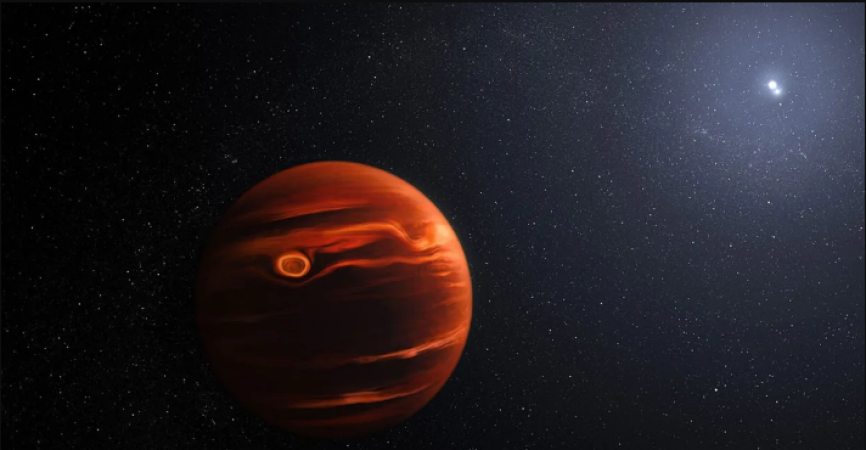
USA: One of the strangest extraterrestrial worlds we have discovered so far is only 70 light-years from Earth.
It has an orbital period of 10,000 years around two stars, is 20 Jupiter masses in mass, and has temperatures that could easily melt aluminium. Oh, and another thing: It's being torn apart by a relentless, violent sandstorm.
The James Webb Space Telescope has allowed astronomers to make the most precise observations of the planetary-mass object to date, revealing turbulent clouds of silicate grains swirling in the atmosphere of the planet VHS 1256 b.
Also Read: For a while now Vivo has been developing a foldable phone in the clamshell design
The discovery, which was first made public on the preprint server arXiv last year, has undergone peer review and will soon be published in The Astrophysical Journal Letters.
The team also pinpointed many of the elements that made up the atmosphere of VHS 1256 b. There have been clear detections of methane, carbon monoxide, and water, as well as additional carbon dioxide evidence.
According to astronomer Paul Mollière of the Max Planck Institute for Astronomy in Germany, "no other telescope has identified so many features at once for a single target."
We are able to decipher the planet's dynamic cloud and weather systems by looking at numerous molecules in a single spectrum obtained by the JWST.
Also Read: Now studies will be even easier, great study APP launched
VHS 1256 b is a bit of a mystery. Its mass lies between giant planets and brown dwarfs, "failed stars," which aren't massive enough to fuse hydrogen but can do so in their cores with deuterium, a heavier hydrogen isotope with lower fusion temperatures and pressures than hydrogen.
The two types of objects are believed to form quite differently. Typically, brown dwarfs collapse from a dense knot of material in a cloud of gas and dust and then take in more material to grow. This is how stars typically form. Deuterium fusion is a stage in the growth process that some stars, such as brown dwarfs, skip and continue to exist as they are.
On the other hand, it is believed that planets develop from the bottom up, starting with the material that remains after a star has formed and clumping together to form a planet. It is assumed that this material is typically located fairly close to the star. VHS 1256 b's two suns are separated from it by a large distance in orbit, which is suggestive but not conclusive that it formed by cloud collapse.
Theoretically, planets could also form from the cloud collapse model; it is thought that a cloud collapse object would have a minimum mass of one Jupiter. The deuterium-burning mass limit is, therefore, the boundary between a planet and a brown dwarf, leaving VHS 1256 b's exact nature unknown.
Also Read: Artificial Intelligence, ChatGPT created jobs can pay upto Rs 2 cr Per year, Here's how
But it was that great distance that made it possible to make such amazing observations.
As a great target for Webb, VHS 1256 b is about four times farther from its stars than Pluto is from the Sun, according to astronomer Brittany Miles of the University of Arizona, who also served as team leader. That indicates that the planet's light is not diluted by that of its stars.